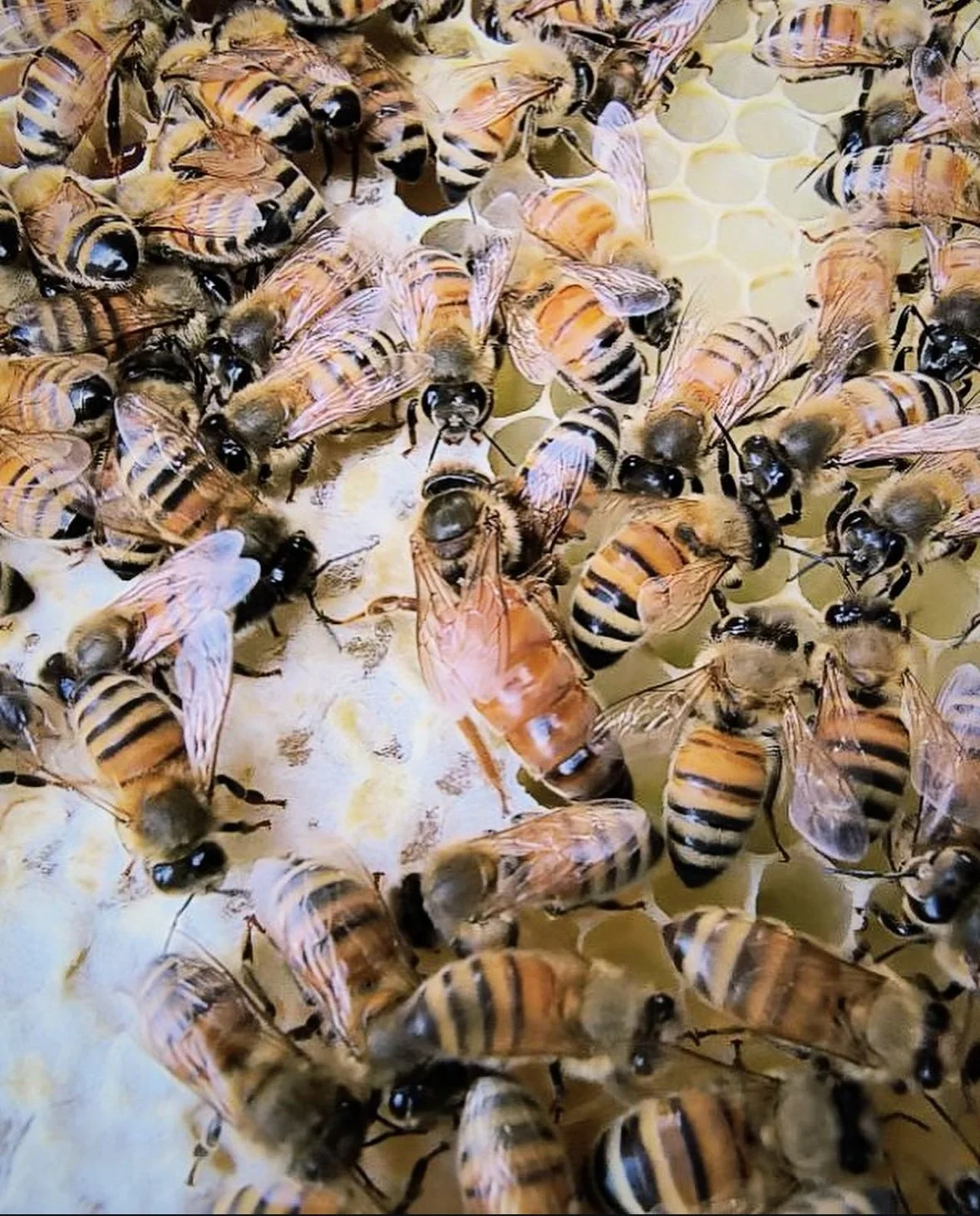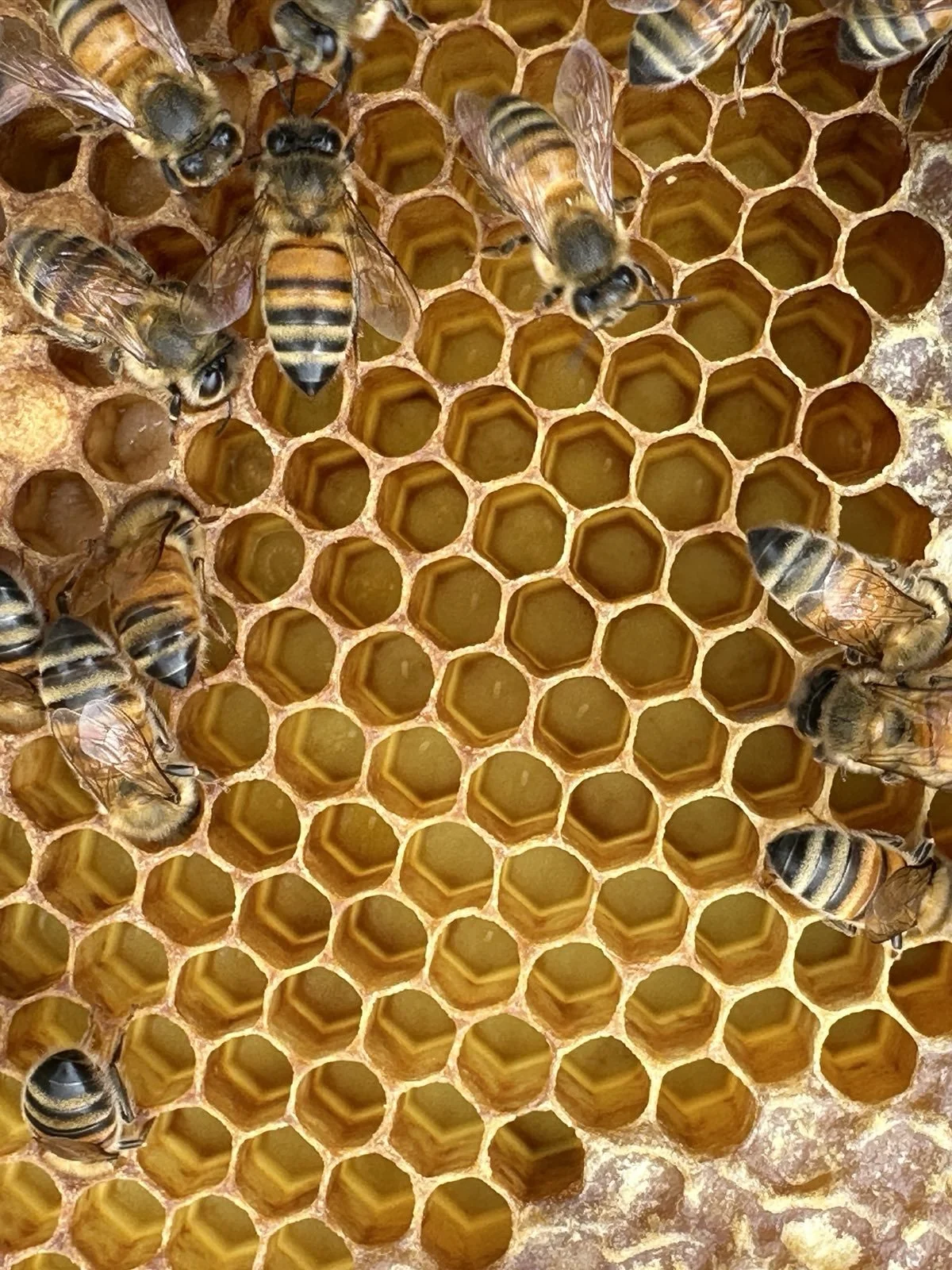Workin’ Bees
Most folks know that a honey bee colony contains a queen, some worker bees, and some drones. But there’s so much more to know about what’s going on in a hive, from the actual role of the queen, to the various jobs of those worker bees and the relative uselessness of the drones. Understanding the work honey bees do within they hive helps us better appreciate their presence in our lives and ecosystem.
Queen honey bee surrounded by worker bees
Let’s start with the queen: from the time she hatches and takes her mating flight, her main role is to lay eggs. All day, every day during seasons of growth. On a typical day, in a healthy hive, she’ll lay between 1,500 and 2,000 eggs. Yes, every. single. day. Each of those eggs becomes either a female worker or a male drone, depending on whether she lays a fertilized or unfertilized egg (more on honey bee reproduction in a future post). Other than her mating flight, the queen remains in the hive all her days, either until old age/poor health forces her to be replaced, or until she flies off with a swarm to find a new home where she’ll keep laying hundreds of eggs every. single. day.
Worker bee eggs (the small, rice grain looking things at the center of the cells)
The ratio of workers to drones varies throughout the seasons, with the highest number of drones appearing in mid- to late-spring, just in time for them to make a stab at mating. And that’s the only job the drones have. They’re born, they fly off in an attempt to find a queen on her mating flight, and they fly home (unless they’re successful in mating with a queen… more on honey bee reproduction in a future post). They don’t perform any other function for the colony, which eventually gets them kicked out.
Foraging honey bee
The worker bees, however, have a great many jobs, and they cycle through them as they age. As soon as they hatch, a worker bee will clean out the cell she hatched from and then get to work as a nurse bee, taking care of the brood (eggs and larval honey bees). Later, she’ll become an undertaker bee, clearing out the bodies of bees who have died inside the hive. Once she’s able to produce wax, she’ll become an architect or builder, constructing comb to provide space for brood, nectar, and pollen. She may then become a guard bee, protecting the entrances of the hive from invaders like hornets, bumblebees, and beekeepers, and eventually will serve in her final role as a forager (those honey bees you see collecting nectar and pollen in your garden). There are other jobs, like fanning–keeping the temperature steady within the hive–and honey making, and a small number of worker bees become attendants to the queen, feeding and grooming her as she goes about her business of constant egg laying.
When it comes to jobs within the colony, it’s clear to see how the female honey bee got her title “worker bee.” They’re industrious little insects working together to keep the hive running smoothly, all the way through their last job bringing food home for their sisters. So, the next time you see a honey bee foraging, think of all the work she’s done before and all the work still being done by the rest of her colony. And then go pick up a jar of local honey and enjoy it even more now that you know all the work that’s gone into it.




